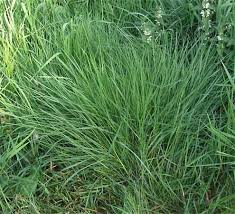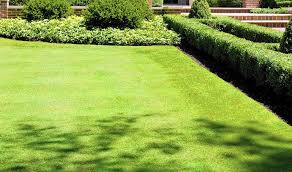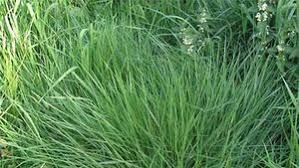Bent Grass is a type of grass commonly used on golf courses and lawns. It’s known for its fine texture and vibrant green color. This type of grass is well-suited for areas with cooler climates. Bent Grass requires regular mowing and proper maintenance to keep it looking its best.
One of the reasons Bent Grass is popular for golf courses is because of its smooth and even surface. This helps golf balls roll smoothly, making the game more enjoyable for players. Golf course managers often work hard to care for and nurture Bent Grass to ensure the putting greens are in top condition.
In addition to golf courses, Bent Grass can also be found in lawns and sports fields. Its ability to form a dense carpet-like cover makes it a good choice for areas where people play and relax. However, it’s important to note that Bent Grass may struggle in hot and humid conditions, so it’s often found in regions with cooler temperatures.
Proper care is essential for maintaining healthy Bent Grass. This includes regular watering, fertilizing, and aeration to keep the soil healthy and the grass thriving. Mowing at the right height is also important to prevent stress on the grass and promote its growth.
In conclusion, Bent Grass is a versatile and attractive grass type often used on golf courses, lawns, and sports fields. Its fine texture, vibrant green color, and ability to create a smooth surface make it a popular choice for areas with cooler climates. With proper care and maintenance, Bent Grass can provide a lush and inviting landscape for various outdoor activities.
Growing and Care Guide of Bent Grass

Bent Grass is a wonderful choice for creating lush and vibrant lawns, especially in regions with cooler climates. Follow these simple steps to successfully grow and care for Bent Grass:
1. Choose the Right Variety: Select the appropriate variety of Bent Grass for your location and intended use. There are different types, such as creeping Bent Grass and colonial Bent Grass, each with its own characteristics.
2. Soil Preparation: Prepare the soil by tilling the area to a depth of 4-6 inches. Remove any debris, rocks, or weeds. Ensure good drainage to prevent waterlogging.
3. Seeding: Bent Grass can be grown from seeds. Sow the seeds evenly over the prepared soil, using a seed spreader for an even distribution. Lightly rake the area to cover the seeds with a thin layer of soil.
4. Watering: Keep the soil consistently moist but not waterlogged during the germination period. Use a gentle mist or sprinkle irrigation to avoid disturbing the seeds.
5. Germination: Bent Grass seeds typically take about 10-14 days to germinate. Once the grass reaches a height of 1-2 inches, you can reduce the frequency of watering.
6. Mowing: Start mowing when the grass reaches a height of around 2 inches. Set your mower to a height of about 1 inch for putting greens and 1.5-2 inches for lawns. Regular mowing encourages denser growth.
7. Fertilizing: Apply a balanced fertilizer with a 3:1:2 or 4:1:2 ratio (nitrogen-phosphorus-potassium) in early spring and again in late summer. Follow the manufacturer’s instructions for application rates.
8. Aeration: Aerating the soil annually helps improve root growth and allows nutrients to penetrate the soil more effectively. This is particularly important for maintaining healthy Bent Grass.
9. Dethatching: Bent Grass lawns may develop thatch, a layer of dead grass and debris. Dethatch the lawn every 2-3 years to prevent thatch buildup, which can impede water and nutrient absorption.
10. Pest and Disease Control: Keep an eye out for common pests like grubs and diseases such as dollar spot. Treat any issues promptly with appropriate pesticides or fungicides.
11. Winter Care: In colder climates, Bent Grass may go dormant during winter. Keep the lawn free of debris and heavy foot traffic during this period. A light winter fertilizer application can help prepare the grass for spring growth.
12. Overseeding: To maintain a dense lawn, consider overseeding every few years. This involves spreading Bent Grass seeds over existing grass to promote thickening.
Remember, proper care and maintenance are crucial for a healthy Bent Grass lawn. Regular watering, mowing, and fertilizing, along with addressing any issues promptly, will help you enjoy a lush and vibrant lawn that you can be proud of.
Read Also: A Guide to Growing and Caring for Blue Oat Grass (Helictotrichon Sempervirens)
Benefits of Bent Grass

Here are 8 (Eight) wonderful benefits of Bent Grass:
1. Fine Aesthetic Appeal: Bent Grass is known for its fine-textured and velvety appearance, adding a touch of elegance and beauty to lawns and landscapes.
2. Smooth Playing Surface: Golfers and sports enthusiasts appreciate Bent Grass for its ability to create a smooth and even playing surface, enhancing the quality of sports such as golf and lawn bowling.
3. Quick Recovery: Bent Grass has a remarkable ability to recover from stress, such as heavy foot traffic or mowing, making it a resilient choice for high-activity areas.
4. Dense Coverage: The creeping growth habit of Bent Grass allows it to form a dense carpet-like cover, minimizing soil erosion and preventing weed growth.
5. Cold Tolerance: Bent Grass performs well in cooler climates and can withstand frost, maintaining its green color even when temperatures drop.
6. Versatility: Whether for manicured lawns, putting greens, or sports fields, Bent Grass adapts well to various uses and can thrive in different settings.
7. Environmental Benefits: Its dense growth helps capture carbon dioxide from the atmosphere, contributing to air quality improvement and a healthier environment.
8. Luxurious Playing Experience: Golfers often praise Bent Grass for the smooth ball roll and consistent putting surface it provides, enhancing the overall playing experience.
These benefits make Bent Grass a popular and versatile choice for creating beautiful and functional outdoor spaces.
Read Also: Cucumber Female Flowers: Economic Importance, Uses and By-Products
Where to Find Bent Grass near Me/You

You can find or locate Bent Grass in various places, primarily in settings where its specific qualities are desired. Here are some common locations where you might come across Bent Grass:
1. Golf Courses: Bent Grass is widely used on golf courses, especially for putting greens, due to its smooth surface and consistent ball roll.
2. Lawn and Landscapes: Many homeowners and landscapers use Bent Grass for lawns, particularly in cooler climates, to achieve a lush and fine-textured lawn.
3. Sports Fields: Sports facilities, such as bowling greens and cricket pitches, often feature Bent Grass to provide a level playing surface.
4. Parks and Recreation Areas: Public parks and recreational spaces might incorporate Bent Grass for its aesthetic appeal and durability in high-traffic areas.
5. Botanical Gardens: Some botanical gardens use Bent Grass for its ornamental value and as part of curated displays.
6. Resorts and Hotels: High-end resorts and hotels might feature Bent Grass in their landscaping to create visually appealing and luxurious outdoor areas.
7. Educational Institutions: College and university campuses with sports fields or well-maintained lawns may use Bent Grass to enhance their outdoor spaces.
8. Residential Developments: Bent Grass can be found in upscale residential neighborhoods or planned communities where landscaping is a key focus.
9. Private Gardens: Enthusiastic gardeners who appreciate its finer qualities may choose to plant Bent Grass in their private gardens.
10. Commercial Properties: Corporate campuses, office complexes, and other commercial properties with well-kept landscapes might use Bent Grass for its aesthetic value.
Remember that the availability of Bent Grass can vary based on your geographical location and climate. If you’re interested in incorporating Bent Grass into your own outdoor space, it’s a good idea to consult with local nurseries, landscaping professionals, or turfgrass suppliers who can provide guidance and assistance.
Read Also: How to Upscale Your Sales With Google My Business
